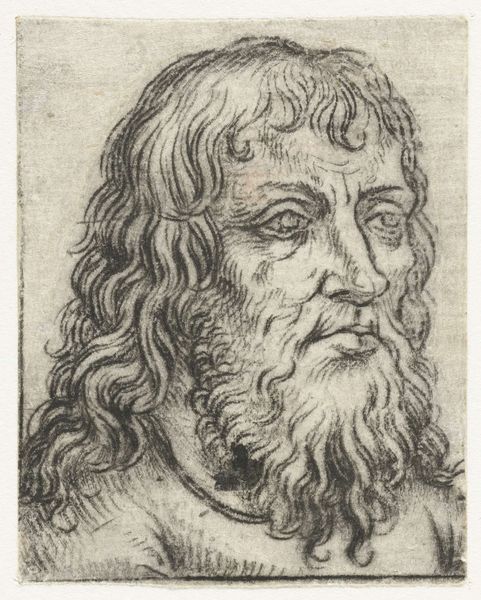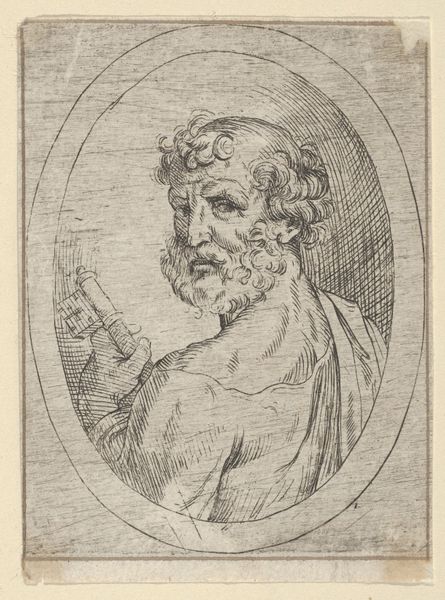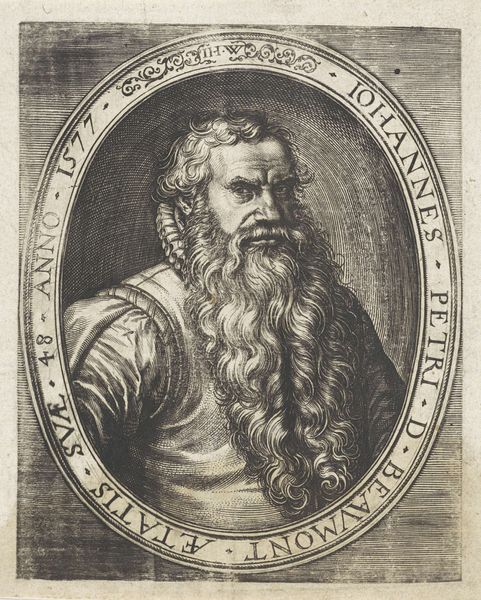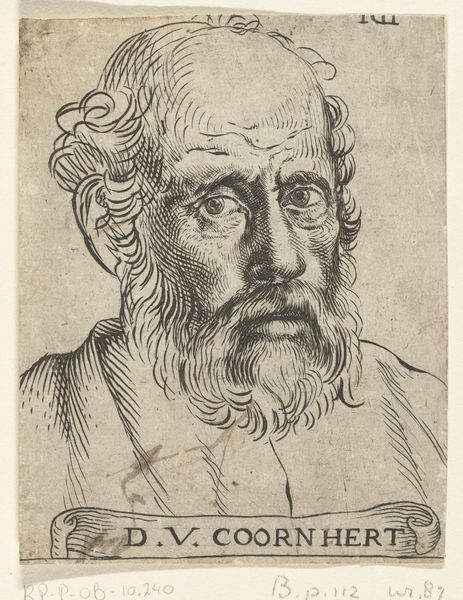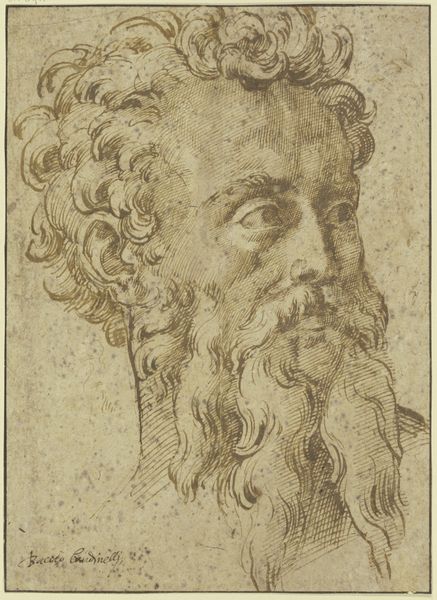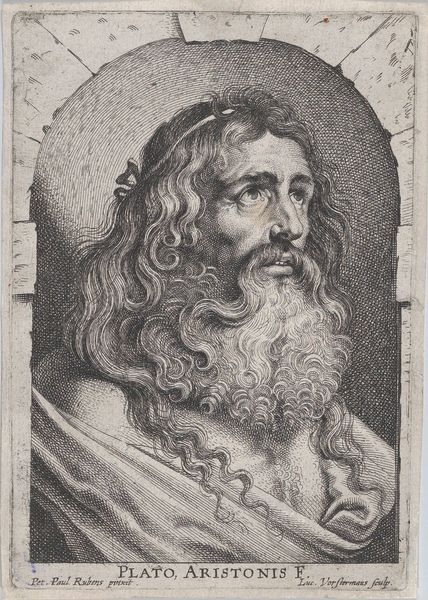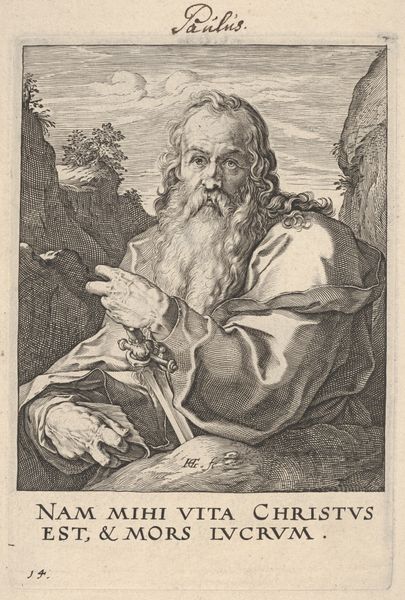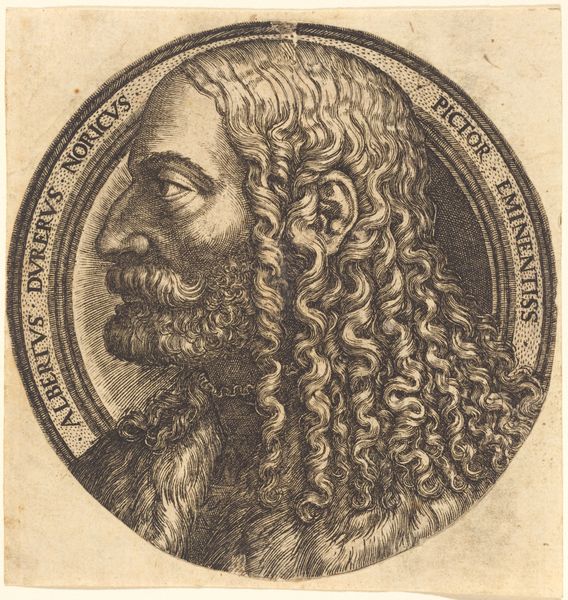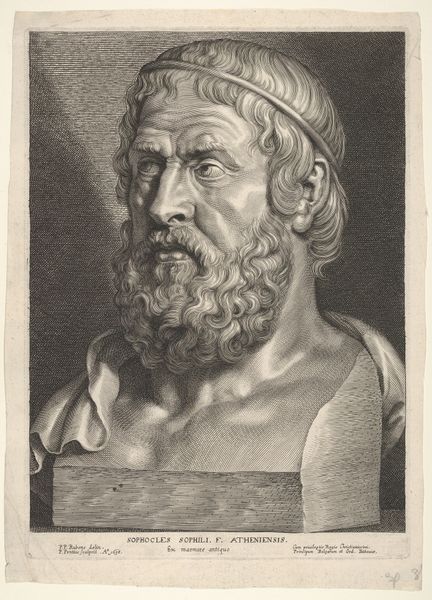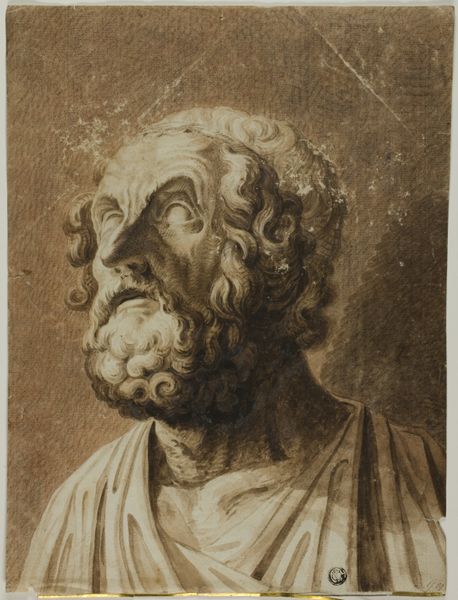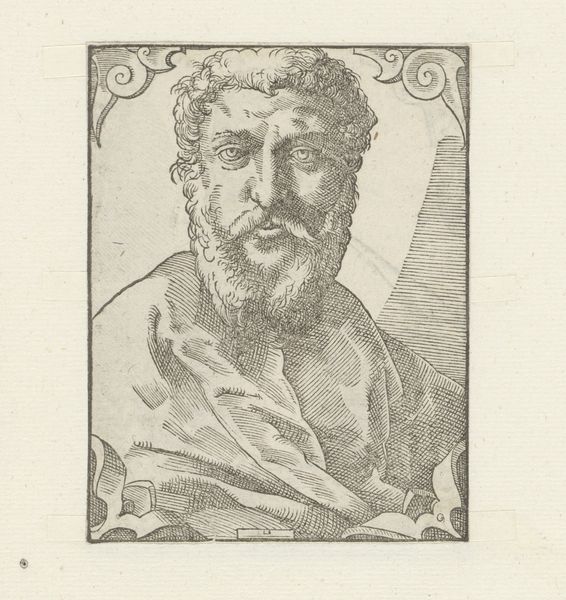
print, engraving
#
portrait
# print
#
german-expressionism
#
figuration
#
line
#
history-painting
#
northern-renaissance
#
engraving
Dimensions: sheet (trimmed to plate): 13.8 × 11.1 cm (5 7/16 × 4 3/8 in.)
Copyright: National Gallery of Art: CC0 1.0
Editor: Here we have Sebald Beham’s "Portrait of an Elderly Man Facing Left," an engraving dating back to 1546. The detail is incredible! What do you make of the textures and lines? Curator: The texture is precisely where my interest lies. The engraving medium, demanding skilled labor and precise tooling, elevates the status of printmaking beyond mere reproduction. Beham’s choice of engraving signifies a specific commitment to craft and a challenge to painting's dominance within the hierarchy of art. Editor: So, it's less about who the man *is* and more about *how* the portrait was created? Curator: Precisely. Consider the lines – meticulously etched into the metal plate. They are evidence of Beham's labor. The inscription at the top translates to "With such sharpness, and according to your diligence, make and tear this face." The text emphasizes the relentless effort and struggle to reproduce an accurate representation. Is the 'tearing' perhaps the carving process? Editor: That's a good point. So the text acts as kind of meta-commentary, right? About the difficulties inherent in representing reality. Curator: Exactly. This isn't just about aesthetics, it's about production. Beham isn't merely depicting a face, he's showcasing the process of its making, the act of “tearing” reality itself through labor, using readily available material and tools that made artistic creation much more accessible. This in turn impacted artistic patronage, opening up new forms of artwork in more common social contexts. Editor: That's fascinating! I had never considered how the act of creation itself could be a subject of the work. I will definitely consider this when analysing artworks moving forward.
Comments
No comments
Be the first to comment and join the conversation on the ultimate creative platform.
